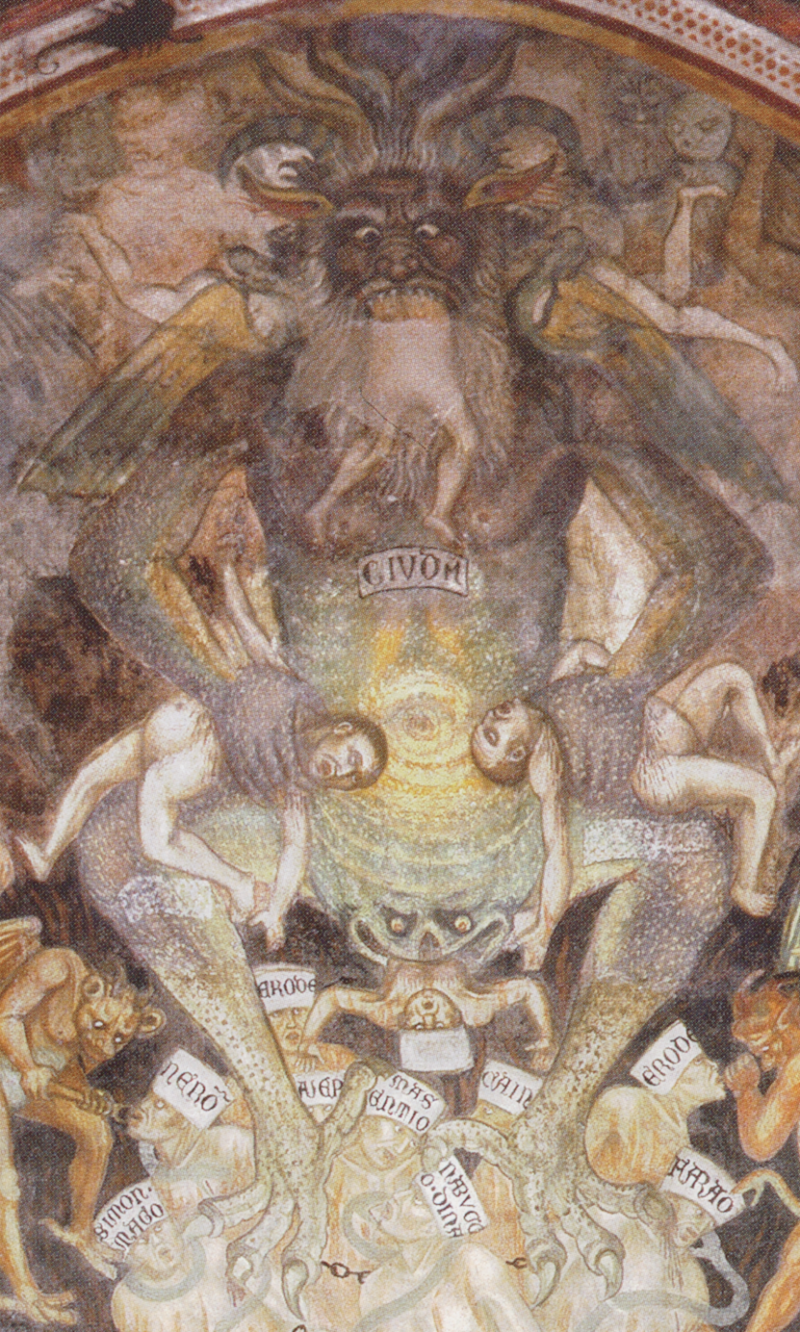Taddeo’s Satan is a monstrous figure. The sickly green devil is shown with a wide opening between his legs [fig. 12]. While the opening is not an exact representation of a vagina, as it is split horizontally and not vertically, the location between the legs of Satan as well as the sinner emanating from it leads to connotations of female genitalia and childbirth. Between his legs emerges a damned sinner, trapped in an endless infernal cycle of death. Taddeo’s inclusion of the anthropomorphized vagina emphasizes the misogyny of the laboring Satan motif, as it provides a more direct reference to female genitalia, which is then demonized through the infernal birthing process. Vaginal motifs were present in other medieval works of art, such as the apotropaic sheela-na-gig grotesques found on cathedrals, though these contain less explicit misogynistic imagery. (1) Through the inclusion of these feminine anatomical motifs, the sinfulness of the female body, rationalized through their sex-based connection to Eve and “colder” humoral temperaments, has now been attributed to Satan.
Satan resides over Hell as a perverse parody of Christ and Mary in Paradise. In Paradise, the hierarchically enlarged figures of Christ and the Virgin Mary sit enthroned above groups of the blessed and angels who stare up towards them in adoration. By contrast, in Hell, Satan is surrounded by sinners who writhe in terror and pain. As the largest figure in the composition, his size and upper, centralized location create a sense of domination over the scene, like Christ and Mary. However, whereas the orderly blessed in Paradise stare in devotion up to Christ and his mother, the figures in Hell exist in frenzied chaos. The neat veneration present in Heaven does not exist within Satan’s Hell.
In each hand Satan holds a sinner, ready to be ingested. The tripartite heads of Satan form another parody of the divine, as the three heads are a caricature of the Holy Trinity. (2) Jeffrey Ruda analyzed this feminized Satan as a parody of the masculine generative power of Christ, illustrated through the image of Christ as Judge. (3) Ruda wrote that this imagery emasculates the devil due to the attribution of a vagina, which means that “he cannot engender life, unlike the fully male Jesus Christ…the feminization of Satan mocks both him and the sinners by degrading physical birth, which is made as disgusting as defecation, and possibly merges with it- in contrast with the clean rebirth offered by Christ.” (4) This misogynistic, and increasingly naturalistic imagery makes a mockery of the birthing process and turns a typically ‘feminine’ experience into a devilish deterrent, acting as a warning to the audience to not turn their backs on the teachings of the clergy that audibly surround them as they contemplate this imagery. (5) This warning was directed in particular to women, whose bodily experiences, which largely defined their essential societal role as wives and mothers, are being cruelly mocked and degraded.

